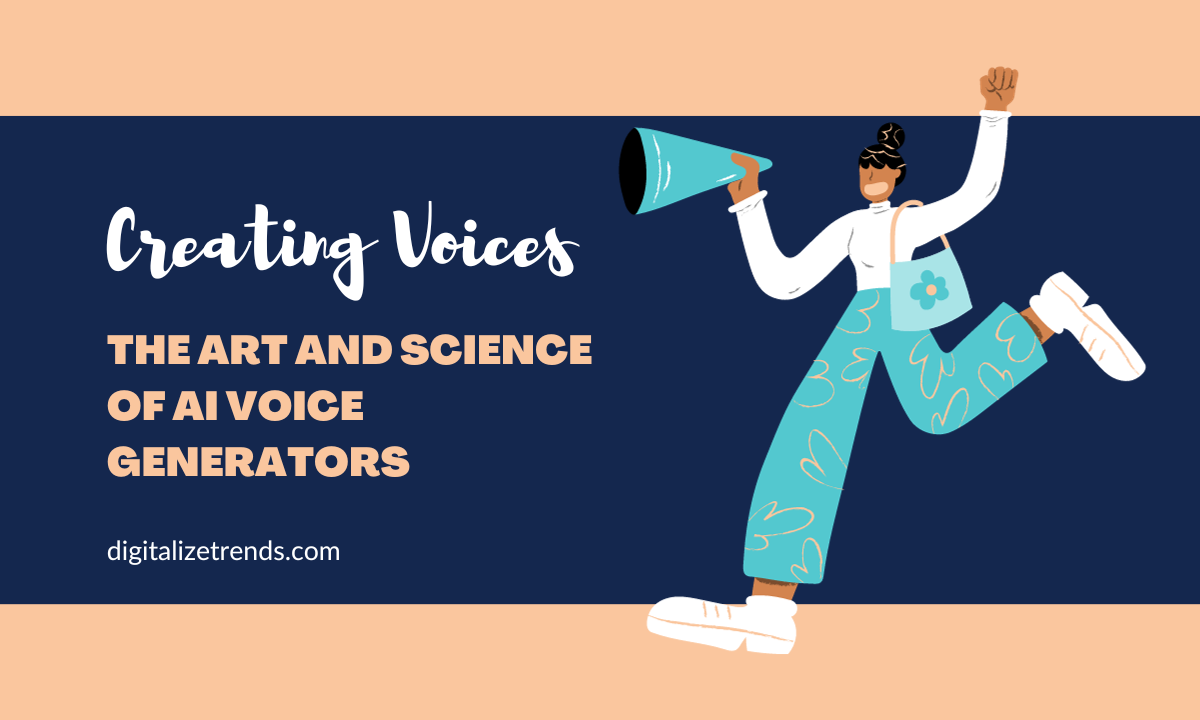Have you ever found yourself marveling at how seamlessly your virtual assistant adapts its tone to answer your queries? Or you’ve been captivated by audiobook narrators who sound almost too human. Welcome to the enthralling universe of AI voice generators, where the synergy of art and science births voices that are synthetic yet eerily authentic. In this immersive journey through the digital vocal landscape, we’ll delve deep into the intricate world of AI voice generators, unraveling the mechanics behind these innovative tools.
Why the Buzz Around AI Voice Generators?
Let’s go over the fundamentals before getting into the specifics. Text-to-audio converters, or AI voice generators, are cutting-edge devices that turn written text into realistic spoken speech.
Forget about the monotonous robotic voices of the past; these advanced tools use sophisticated algorithms to mimic natural intonations, accents, and even emotional nuances.
Unveiling the Magic: The Inner Workings of AI Voice Generators
How does this wizardry happen, you ask? AI voice generators leverage deep learning and neural networks to analyze patterns and nuances in human speech. By processing vast datasets of recorded voices, these systems learn to generate synthetic voices that sound remarkably authentic. The result? Voices that can seamlessly mimic the cadence and style of a human speaker.
The Surge of Text-to-Audio Converters: A Quick Overview
Text-to-audio converters have undergone a meteoric rise, with industries from entertainment to accessibility embracing their potential. AI-generated voices now power audiobooks, podcasts, virtual assistants, and even customer service hotlines. The text-to-audio converter and AI voice generator underscore the importance of these tools in reshaping the auditory landscape.
The Intersection of Art and Science in Crafting Voices
Crafting voices through AI is a fascinating blend of art and science. On the artistic side, it involves understanding the nuances of human expression, the subtleties of emotion, and the regional variations in accents. On the scientific side, it requires leveraging cutting-edge approaches like deep learning and neural networks to process and recreate these nuances in a synthetic form. It’s a delicate dance that results in voices that not only convey information but also resonate with the human experience.
Tips for Crafting Convincing AI Voices
Embrace Natural Pacing: AI voice generators excel when they replicate the natural ebb and flow of human speech. Adjust pacing to match the context, whether it’s a casual chat or a formal presentation.
Fine-Tune Emotion Expression: Injecting emotion into synthesized voices enhances the user experience. Modern AI voice generators can convey joy, empathy, or urgency, making interactions more engaging.
Accent Adaptability: Embrace diversity by ensuring your AI voice generator supports a range of accents. This not only enhances inclusivity but also creates a more relatable and authentic experience.
Tools of the Trade: A Look at Popular AI Voice Generator Platforms
Google Cloud Text-to-Speech: Google’s offering stands out for its wide range of voices, from WaveNet to standard models. It supports multiple languages and comes with advanced customization options.
Amazon Polly: Amazon’s text-to-speech service is a go-to for developers. With lifelike voices and easy integration with various platforms, it’s a top choice for dynamic applications.
IBM Watson Text to Speech: IBM Watson brings its AI prowess to the table, offering customizable voices and support for numerous languages. Its robust capabilities make it a contender in the AI voice generator arena.
Real-Life Examples: AI Voices in Action
Audiobooks by Audible: Audible, the audiobook giant, uses AI voice generators to create immersive experiences. Their technology adapts to different genres, ensuring that the voice matches the tone of the story.
Google Assistant: Google’s virtual assistant relies on AI voice generators to deliver responses that feel natural and dynamic. From answering questions to providing weather updates, Google Assistant showcases the versatility of AI-generated voices.
Challenges and the Road Ahead
Despite the advancements, challenges persist. Achieving perfect naturalness and overcoming the “uncanny valley” effect—where synthetic voices sound almost human but not quite—remain ongoing objectives. Finding the ideal ratio between personalization and avoiding unintended biases is another hurdle that developers are actively addressing.
The Future: Crafting a Sonic Symphony
In wrapping up our exploration of AI voice generators, it’s clear that we’re witnessing the birth of a sonic revolution. The blend of art and science in creating voices that resonate with users is redefining the way we interact with technology. Whether it’s the warmth of a virtual assistant or the immersive experience of an audiobook, AI voice generators are here to stay.
So, next time you hear a voice that feels almost too real, remember the intricate dance of algorithms and data that made it possible. Thus, the text-to-audio converter and AI voice generator symbolizes more than just technological tools; they represent a journey into a future where voices are crafted, not just spoken. Get ready to embrace the sonic symphony of AI-generated voices – it’s a revolution that’s changing the way we listen and connect in this digital age.



